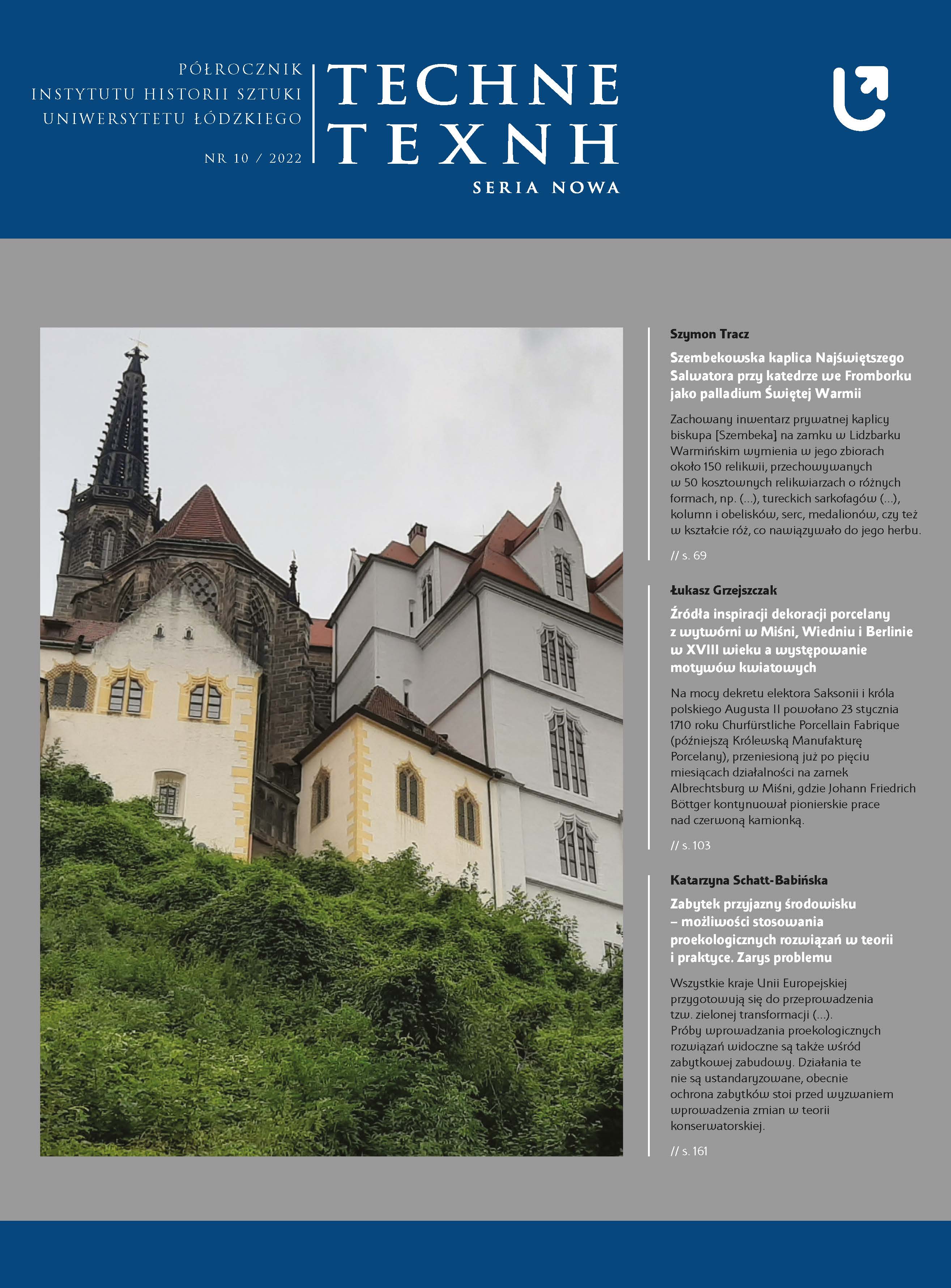In the shadow of the great master – Teodora Matejko. Biography outline
DOI:
https://doi.org/10.18778/2084-851X.14.05Keywords:
Matejko Kornelia Teodora née Giebułtowski, Matejko Jan, 19th century, private lives of artists, CracowAbstract
Kornelia Teodora Matejkowa née Giebułtowska was not only the wife of the famous painter Jan Matejko, but also his greatest muse. In the work “In the shadow of the great master – Teodora Matejko. Outline of biography” we get to know Teodora as a little girl, a maturing maiden, wife and mother. Teodora showed artistic talents from an early age. She studied singing and music, but her biggest dream was to become an actress. Teodora’s mother decided that it would be better for her if she got married. Passionate feeling appeared after the wedding. Then she wasn’t sure if she was worthy of the great artist’s love. She missed him when he left. She comforted him, lifted his spirits. She was his greatest admirer. She loved passionately. The life of the Matejkos was concentrated in Kraków, but there were also numerous travelers. They visited Wiśnicz, Rabka, Krynica, but also went abroad. They visited e.g. Germany, Turkey and Italy. Teodora was undoubtedly her husband’s biggest fan, as she assured him in numerous letters. Over time, their love began to be subjected to numerous tests. Teodora Matejko, busy running the house and raising four children, fell into numerous melancholies and anxiety. Her surroundings paid little attention to her. It was reluctant towards a woman who took her husband’s honors very personally. She boasted about the popularity of her beloved. With following years, her sense of superiority grew, as a result of which she felt the reluctance of her family and friends around her. However, in the marital home she played the “first violin”. According to Matejko, she was perfect, the only one in the world, his first and last love. The artist, who fell in love with all his heart, assured Teodora of his fiery feeling, which would never die out. Matejko’s marriage was very turbulent. From the states of the greatest quarrels, blasphemies, curses to joint journeys and tender longings. Such disharmony not only distorted the image of the family, but also strongly influenced the psyche of its household members. As she got older, she began to suffer from diabetes, which was hereditary in her family. In 1882, she was declared insane, after which she was placed in a psychiatric hospital. She died on August 25, 1896. She was buried next to her husband.
It is common view presented in literature that Teodora was wayward, disobedient, capricious, and defiant. She was the subject of suffering for at first a young artist, then a mature man, and finally an exhausted elder. At first, she appears as a young, unfulfilled girl who doesn’t want to get married. She is not ardently in love with her patient suitor. Eventually, she becomes Matejko’s wife. She gives him children. After this, time of growing pride, intransigent personality and constant moods begins, with which the painter copes at the expense of his own health. Ridicule and gossip still accompany Madame Matejko. As this period comes to an end, Teodora is seen as the doom of the family. Mentally ill, wasting the fortune of the Krakow visionary. She does not take care of her growing children, she is constantly on health treatments, she does not respect her husband, she causes pain to everyone. An unfair image? Imitation and repetition made the great muse of the most outstanding and popular Polish painter of the 19th century appear to be his greatest curse.
References
GINTEL 1955 – Jan Gintel, Jan Matejko. Wypisy biograficzne, Kraków 1955.
Google Scholar
Gorzkowski 1993 – Marian Gorzkowski, Jan Matejko. Epoka od r. 1861 do końca życia artysty z dziennika prowadzonego w ciągu lat siedemnastu, opr. Kazimierz Nowacki, Ignacy Trybowski, Kraków 1993.
Google Scholar
Listy Matejki do żony 1927 – Listy Matejki do żony Teodory 1863– 1881, opr. Maciej Szukiewicz, Kraków 1927.
Google Scholar
Serafińska 1955 – Stanisława Serafińska, Jan Matejko. Wspomnienia rodzinne, Kraków 1955.
Google Scholar
ANTECKA/Buyko 2014 – Jolanta Antecka, Małgorzata Buyko, Teodora moja miłość. Życie codzienne Jana i Teodory Matejków, Olszanica 2014.
Google Scholar
BOGUCKI 1955 – Jan Bogucki, Matejko, Warszawa 1955.
Google Scholar
CZAPSKA-MICHALIK 2007 – Magdalena Czapska-Michalik, Jan Matejko, Warszawa 2007.
Google Scholar
MICHAŁOWSKI 1979 – Janusz Maciej Michałowski, Jan Matejko, Warszawa 1979.
Google Scholar
OKOŃ 2001 – Waldemar Okoń, Jan Matejko, Wrocław 2001.
Google Scholar
Prokesch 1916 – Władysław Prokesch, Józef Unierzyński, Kraków 1916.
Google Scholar
Przemecka 1985 – Maria Przemecka, Krakowskim szlakiem Jana Matejki, Warszawa–Kraków 1985.
Google Scholar
Słoczyński 2000 – Henryk Marek Słoczyński, Matejko, Wrocław 2000.
Google Scholar
SZYPOWSKA 1976 – Maria Szypowska, Jan Matejko wszystkim znany, Warszawa 1976.
Google Scholar
WITZ 1970 – Ignacy Witz, Polscy malarze, polskie obrazy, Warszawa 1970.
Google Scholar
Zagrajek 1997 – Agnieszka Zagrajek, Dom Jana Matejki. Oddział Muzeum Narodowego w Krakowie, Kraków 1997.
Google Scholar
ZGÓRNIAK 1998 – Marek Zgórniak, Matejko w Paryżu. Opinie krytyków francuskich z lat 1865–1870, Kraków 1998.
Google Scholar
ZGÓRNIAK 2004 – Marek Zgórniak, Jan Matejko 1838–1893. Kalendarium życia i twórczości, Kraków 2004.
Google Scholar
Downloads
Published
How to Cite
Issue
Section
License

This work is licensed under a Creative Commons Attribution-NonCommercial-NoDerivatives 4.0 International License.








